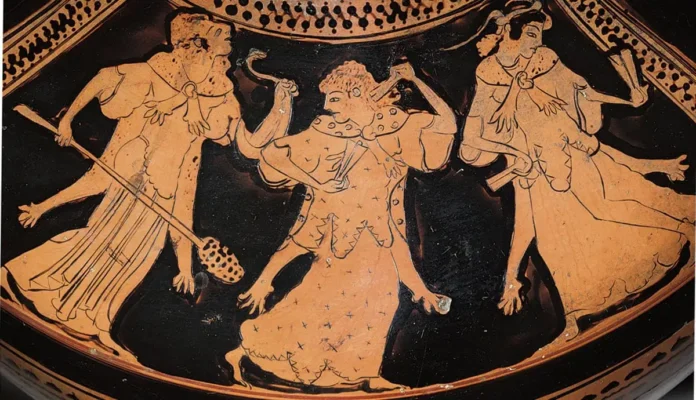Sacred Symbols: How Ancient Art Reflects Spiritual Beliefs Across Cultures It has always been more than decorative; art is a deep insight into the soul of society that captures transcendent values that cross through time and place. From intricate carvings in temples to vibrant murals on cave walls, ancient art speaks a universal language of spirituality—one that echoes through the ages. Take this enlightening journey with us to find out how sacred symbols have been woven into various cultures across the world. Find out how these artistic expressions not only reflect spiritual beliefs but also build bridges between the past and present of humankind as a whole, giving glimpses to our common quest for meaning, purpose and communication with the divine. Gear up because we are going to unravel this interesting tapestry of faith in creativity!
Introduction to Sacred Symbols and their Importance in Ancient Cultures
Ancient Art civilizations have used sacred symbols as important forms of expression for long periods of time. These elaborate designs embody concepts behind entire societies’ religious beliefs. Ancient art teems with hidden messages, from towering pyramids to fancy pottery waiting for us to break them down. Each symbol is an account—a reflection of rituals, spiritual connections, and communities’ structures within times and spaces.
By uncovering why sacred symbols are such significant aspects of our world’s history you come upon not just beauty but profoundity as well. But what drove men all through history so far? How could they help them find their ways in life spiritually? Keep company with us throughout history’s fabric where art meets spirituality showing timeless truths about mankind’s search for knowledge.
Examples of Sacred Symbols from Different Cultures (Egyptian, Mayan, Chinese, etc.)
Every culture has its own unique story told by its sacred symbols depicted in different ways everywhere across the world. In ancient Egypt it stands for life and immortality. This figure in the shape of a cross was often found in the hands of gods and goddesses.
The jaguar has always been valued by Mayan civilization to symbolize strength and power, representing underworlds. It also graced temples, indicating its authority as well as spiritual value.
In China yin-yang stands for harmony between opposites. On one hand, it describes the delicate balance within human existence and nature around it.
Dreamcatchers were often used by native American cultures to separate dreams. These intricate webbings keep away bad spirits during sleep time.
These sacred symbols function as windows into their beliefs and values in all these traditions. Each symbol speaks from its historical background while revealing universal themes about spirituality and connection to something more significant than oneself.
The Symbolism and Meaning behind Each Symbol
Most sacred symbols contain immense meaning beyond the images themselves. For example, in Ancient Art Egypt ankh represents life and immortality. The shape consists of a cross combined with a loop which stands for endless life hereafter.
In Mayan culture, the jaguar is a symbol of forcefulness, just like power itself is expressed through her nature. It is considered as warrior-like spirit who mainly dwells in hell or spiritual world.
Chinese characters follow suit when it comes to profundity too. The yin-yang sign demonstrates how opposite forces balance each other; this can be understood even further because there are two aspects of life—light or dark; male or female respectively—that make an existentially complete place for unity.
The Importance of Continuing to Learn and Value Ancient Art as well as Its Symbols.
Each symbol is a piece of art and also a tool for telling stories on existentialism, spirituality or ancient community roles. They help in grounding belief systems while at the same time revealing how certain societies have been viewing their universe through metaphysics.
How these Symbols Reflect Spiritual Beliefs and Social Hierarchies
Through sacred symbols, we can examine the spiritual beliefs of various cultures. Each emblem is therefore highly symbolic in nature since it represents not only religious ideologies but also social strata.
For example, The ankh was an Egyptian symbol that stood for life and immortality. It was associated with divine rulers who believed that they had a connection with the afterlife. This shows that political power was intertwined with religion during this time.
On the other hand, Mayan glyphs were often used to express very complex cosmological ideas shared by a society which had close ties to its natural environment. Their agricultural cycles decided how communities were organized; meaning their way of living depended on their spirituality.
Chinese symbolism has many concepts of harmony. The yin– yang signifies balance between opposites in order to show how humans are connected within themselves.
These symbols are not mere decorations on artifacts but cultural narratives that shape individual identity and collective consciousness. In this sense they tell us something about what people thought about their place in the world.
The Role of Sacred Symbols in Cosmic Order and Connection to the Divine
Sacred symbols connect human experience to cosmic life. They contain deep knowledge about existence which sometimes reflects a broader understanding of creation laws within society.
In several cultures, these signs represent heavenly bodies or naturally occurring phenomena. For instance, it may represent enlightenment or the sun as a source of life giving energy whereas the moon could be intuition or cycles of time perception.
Ancient peoples expressed their understanding regarding cosmic order via rituals and art forms. Therefore, this relationship with divinity was not abstract but had an impact on everyday governance.
The intricate designs of temples or monuments also attest to the profound intermingling of spirituality with social structure. Each symbol reminded human beings that they were part of a greater whole, thus leading them to meditate on life’s mysteries.
They still hold relevance up to date; encouraging people to dig deeper into their relationship with the world around us.
Preservation and Evolution of Sacred Symbols in Modern Society
Sacred symbols have undergone various historical periods, adapting themselves to changes in society as well as culture. They are now often used in modern art, fashion and lifestyle choices.
Many people prefer wearing ancient symbols as jewelry or tattoos because they see these patterns as a continuation of their ancestors’ traditions. It is a combination of conventionality and contemporary self-awareness.
In today’s global spiritualism, these icons are seen as reminders for universal truths. They resonate with individuals searching for meaning amid chaos. This bond is strengthened further by social media platforms which allow multiple interpretations coming from all over the world.
Artistic expressions keep changing too. Artists draw inspiration from such sacred motifs even while incorporating current themes – addressing environment or social justice issues through their work.
While they may go unnoticed by some people, others seek truthfulness within such representations. The conversation between past and present makes the exploration of human experience more meaningful when using these impactful images.
Conclusion:
Why We Should Continue to Study and Appreciate Ancient Art and its Symbolism.
The study of ancient art, especially its sacred symbols, provides profound insights into the spiritual beliefs and practices of past civilizations. These symbols are not mere decorations; they have deep meanings that connect us to our ancestors’ view of life. We will see a reflection in their complex motifs of the values, hierarchies and cosmic orders that shaped these societies.
An appreciation for cultural diversity is enhanced by understanding these symbols. Every emblem has a story; it may be the Ankh which represents eternal life in Egypt or it can be the Mayan Jaguar as an image of strength and power. Rich symbolism like this allows one to make connections between modern issues and ancient communities.
Furthermore, as globalization influenced modern culture more every day, it becomes vital to preserve this knowledge from antiquity. This is because sacred symbols remind us of humanity’s search for meaning throughout time and space; thus, they provoke contemplation on spirituality within our fast-paced contemporary world.
By delving into ancient artifacts and their symbolism, we celebrate human creativity while fostering connections across cultures. Unearthed from these history treasures are vast amounts of knowledge waiting to be discovered – proof both that we share common roots and that we each travel unique paths through life’s enigmas.
As we embrace this exploration process, we come to understand ourselves better today while respecting those who lived before us during this magnificent journey called existence.


